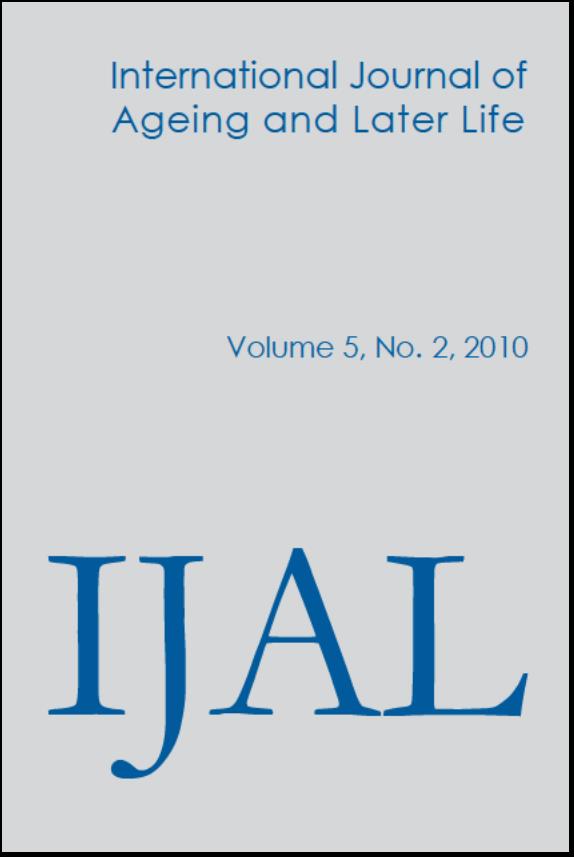Tasks performed by primary caregivers and migrant live-in homecare workers in Israel
Main Article Content
Abstract
The issue of migrant live-in homecare workers has been barely addressed in the gerontological literature, in spite of the increase of older persons being cared for by such persons in many Western countries. The purposes of the study are to examine the extent to which migrant live-in homecare workers substitute family caregivers or complement the care that is provided by primary caregivers, and to examine if there are differences in primary caregivers’ involvement in providing help with activities of daily living (ADL) and instrumental activities of daily living (IADL) before and after hiring a migrant live-in homecare worker, by caregivers’ employment status and gender. The data were drawn from a study that included 335 triads (care recipients, their primary caregivers, and their Filipina live-in homecare workers).
The findings show that for the most part primary caregivers continue to play a significant role in providing care, in particular with regard to IADL tasks, even when there is a migrant live-in homecare worker. Several patterns of division of labor between the formal and informal caregivers were identified; that is, in some cases they complement each other while in other cases the migrant live-in homecare workers substitute for the care previously provided by the primary caregivers. Significant differences between male and female caregivers and between working and nonworking caregivers were found with regard to involvement in providing care before and after employment of a migrant homecare worker.
Metrics
Article Details

This work is licensed under a Creative Commons Attribution-NonCommercial 3.0 Unported License.
Since 2020 the International Journal of Ageing and Later Life uses a Creative Commons: Attribution license, which allows users to distribute the work and to reform or build upon it without the author's permission. Full reference to the author must be given.
References
AARP. (2005). AARP International forum on long-term care. Available on http://www.aarp.org/research/international/events/ltcforum_landing.html (Accessed: December 16, 2004).
Agree, E. M., Freedman, V. A., Cornman, J. C.,Wolf, D. A. & Marcotte, J. E. (2005). Reconsidering substitution in long-term care: When does assistive technology take the place of personal care. Journals of Gerontology Series B 60(5): S272–S280.
Ayalon, L. (2009). Family and family-like interactions in households with round-the-clock paid foreign carers in Israel. Ageing & Society 29(5): 671–686.doi:10.1017/S0144686X09008393
Brodsky, J., Naon, D., Resnizky, S., Ben-Noon, S., Morginstin, B., Graa, R. & Schmeltzer, M. (2004). Recipients of Long-Term Care Insurance Benefits: Characteristics, Formal and Informal Assistance Patterns and Unmet Needs. Jerusalem: JDC-Brookdale Institute.
Browne, C. V. & Braun, K. L. (2008). Globalization, women’s migration, and the long-term care workforce. The Gerontologist 48(1): 16–24.PMid:18381828
Cantor, M. H. & Brennan, M. (2000). Social Care of the Elderly: The Effects of Ethnicity, Class and Culture. NY: Springer.
Denton, M. (1997). The linkages between informal and formal care of the elderly. Canadian Journal on Aging 16(1): 30–50.doi:10.1017/S0714980800014148
Doyle, M. & Timonen, V. (2009). The different faces of care work: Understanding the experiences of the multi-cultural care workforce. Ageing & Society 29(3): 337–350.doi:10.1017/S0144686X08007708
Green, V. & Auslander, G. (2008). Social networks and social support among functionally impaired older persons living in the community. Gerontologia 35(2): 111–126 [Hebrew].
Howe, A. L. (2009). Migrant care workers or migrants workers in longterm care? A review of Australian experience. Journal of Aging & Social Policy 21(4): 374–392.doi:10.1080/08959420903167140
Iecovich, E. (2007). Live-in and live-out homecare services and care recipient satisfaction. Journal of Aging and Social Policy 19(4): 105–122.doi:10.1300/J031v19n04_06
Iecovich, E. (2010). Primary Caregivers and Migrant Homecare Workers in Elder Care: Factors that Explain Caregiving Burden and Satisfaction of Primary Caregivers and Job Satisfaction of the Migrant Homecare Worker: A Research Report. Israel, Beer Sheva: Ben Gurion University.
Litwak, E. (1985). Helping the Elderly: The Complementary Roles of Informal Networks and Formal Systems. NY: Guilford Press.
Litwin, H. & Attias-Donfut, C. (2009). The inter-relationship between formal and informal care: A study in France and Israel. Ageing and Society 29(1): 71–91.doi:10.1017/S0144686X08007666
Lowenstein, A. & Daatland, S. O. (2006). Filial norms and family support in a comparative cross-national context: Evidence from the OASIS study. Ageing & Society 26(2): 203–223.doi:10.1017/S0144686X05004502
Natan, G. (2009). Migrant Workers in Israel: Key Issues and A Current Picture. Jerusalem: The Knesset [Hebrew].
Noelker, L. S. & Bass, D. M. (1989). Home care for elderly persons: Linkages between formal and informal caregivers. Journal of Gerontology: Social Sciences 44(2): S63–S70.
Penning, M. J. & Keating, N. L. (2000). Self, informal and formal care: Partnerships in community-based and residential care settings. Canadian Journal on Aging 19 (Suppl. 1): 75–100.doi:10.1017/S0714980800014665
Polverini, F. & Lamura, G. (2004). National Report on Italy: Labour Supply in Care Services, Ancona: Italy. Ancona, Italy: Instituto Nazionale di Riposo e Cura Anziani, Department of Gerontological Research.
Redfoot, D. L. & Houser, A. N. (2005). ‘‘We Shall Travel On’’: Quality of care, economic development, and the international migration of long-term care workers: Research Report. AARP Public Policy Institute, AARP Public Policy Institute. Available on: http://www.aarp.org/research/longtermcare/quality/inb104_intl_ltc.html (Accessed: November 27, 2005).
Rothgang, H. & Lamura, G. (2005). Labour Market Participation, Income and Migrant CareWorkers. Brussels: Pan European Network. EUROFAMCARE (Unpublished presentation).
Ungerson, C. (1990). The language of care: Crossing the boundaries. In C. Ungerson (ed.), Gender and Caring: Work and Welfare in Britain and Scandinavia (pp. 8–33). NY: Harvester.
Ungerson, C. (1999). Personal assistant and disabled people: An examination of hybrid form of work and care. Work, Employment and Society 13: 583–600.
Van der Geest, S., Mul, A. & Vermeulen, H. (2004). Linkages between migration and the care of frail older people: Observations from Greece, Ghana and The Netherlands. Ageing and Society 24(3): 431–450.doi:10.1017/S0144686X04002302
Ward-Griffin, C. & Marshall, V. W. (2003). Reconceptualizing the relationship between ‘‘public’’ and ‘‘private’’ eldercare. Journal of Aging Studies 17(2): 189–208.doi:10.1016/S0890-4065(03)00004-5
WHO (World Health Organization). (2006). The World Health Report – Working Together for Health. Available on: http://www.who.int/entity/whr/2006/en/ (Accessed: December 10, 2006).





